Header start
- Home
- Keio Times Index
- Keio Times
Content start
The Story of Ray's Blog: From Student Entrepreneurship to Global Innovation
Classroom Adventure Inc.
Dec. 19, 2024
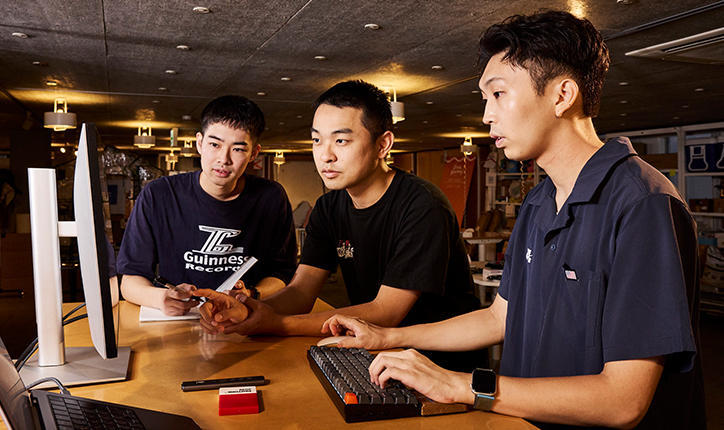
Media literacy education, designed to equip students with the skills to discern truth from misinformation, is a recent addition to junior high and high school curriculums in Japan amid the onslaught of information today. One program now making waves in media literacy education is Ray's Blog, a groundbreaking initiative developed by Classroom Adventure Inc., a start-up founded by three Keio University students. This innovative program has garnered global attention for its engaging, immersive approach to teaching media literacy. Late last year, Google recognized Ray's Blog for its pioneering and sustainable strategy to combat fake news, inviting the team to showcase their work at the Trusted Media Summit 2023 in Singapore, Asia's largest media-focused event. We spoke with the team about how they developed the program, their journey, and their vision for the future.
- What kind of program is Ray's Blog?
Imai: It's a program designed to teach players how to critically engage with information online through a mystery-solving game. The program consists of two main parts―games and lessons―that help players deepen their understanding of media literacy. Accessible via a smartphone or other mobile device, Ray's Blog features an animated, story-driven format that transports players to a junior high school classroom. They are challenged by a character named Ray to solve the mystery of his identity by analyzing the blog he left behind. Packed with misinformation, the blog requires you to identify inaccuracies to move forward, each discovery bringing you one step closer to solving the mystery.
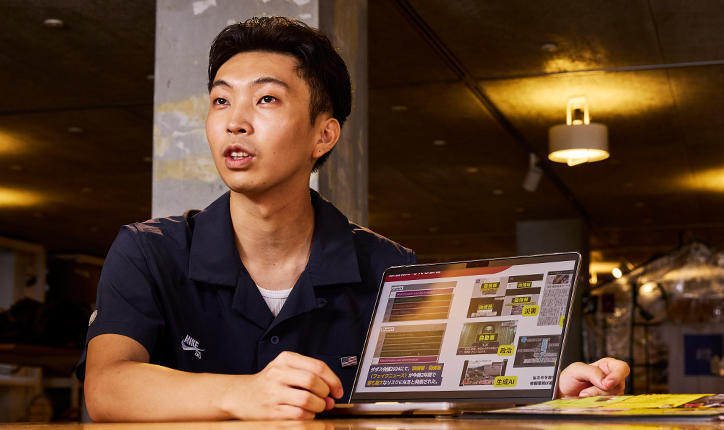
– Your program has been met with international acclaim. How did the three of you meet?
Imai: We met in a German language class at Keio. It was during the COVID-19 pandemic, so classes were almost entirely online. Our German class met four times a week, so we saw each other online nearly every morning. Later, once some of our classes, like PE, were held in person again, we happened to ride the same bus home, which gave us the chance to talk more.
Furukata: Shonan Fujisawa Campus (SFC) is quite far from the nearest station―about an hour's walk― so most students take a bus from Shonandai Station.
Imai: Actually, I remember how you mentioned trying to visit campus before school started but couldn't manage to find it.
Furukata: Oh yeah, that's right. I didn't check the directions beforehand. Somehow, I thought that since it was a university, it would be closer to the station. I made it to Shonandai Station but couldn't find the campus. In hindsight, I could've checked the map on my phone―it would have come right up―but it didn't occur to me at the time, so I just went home instead.
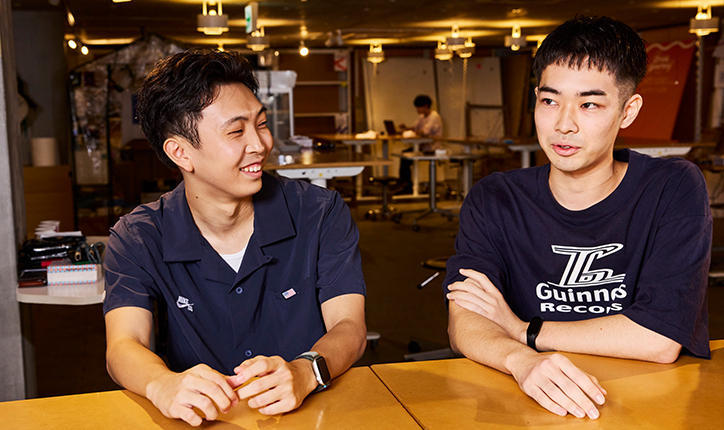
Imai: The campus isn't as hard to reach as it might seem―it's just a short bus ride away. When we met face-to-face on the bus for the first time, we recognized each other from German class and began chatting. During our conversation, the topic of course registration came up, and I found out that Horiguchi hadn't registered for any courses yet. Horiguchi may look Japanese, but he's all American. Since all the orientation sessions were online, he seemed to have little understanding of how course registration actually works (laughs).
Horiguchi: That's true. I was born in the U.S. and came to Japan for the first time when I was 18. While I can speak Japanese, reading and writing are still challenging, so these guys had to help me a lot.
Imai: At SFC, first-year students have considerable freedom in selecting their classes, with only language courses being mandatory. But apparently, Horiguchi didn't fully grasp that idea.
Horiguchi: Back in the U.S., I went to a supplementary Japanese school on the weekends, but reading and writing are still tricky for me (laughs).
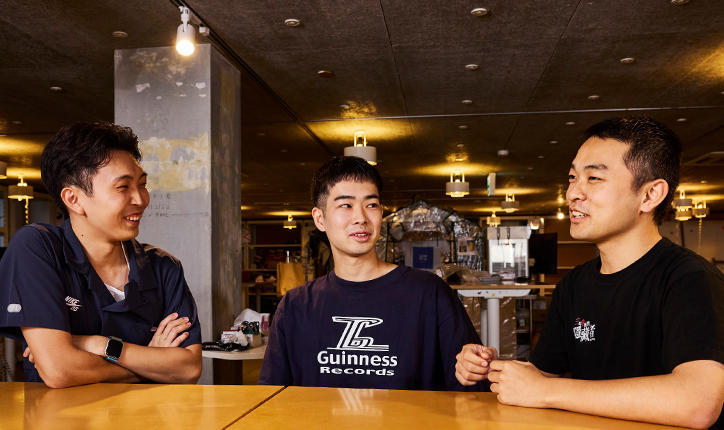
– What led the three of you to choose Keio University?
Horiguchi: I initially enrolled at a university in the U.S., but it didn't feel like the right fit for me. I've always loved anime, was interested in Japan, and wanted to start my own business, so I decided to study here. While researching universities, Keio stood out to me for its strong focus on entrepreneurship. Keio seemed full of people pursuing bold ideas, and the culture felt very free-spirited. That's why I decided to apply here. I came to Japan six months before the entrance exam to prepare for the university application process. I went to a Japanese prep school to get ready for the entrance exams and worked on improving my Japanese reading and writing with kanji workbooks, but even then, registering for courses was still a challenge (laughs).
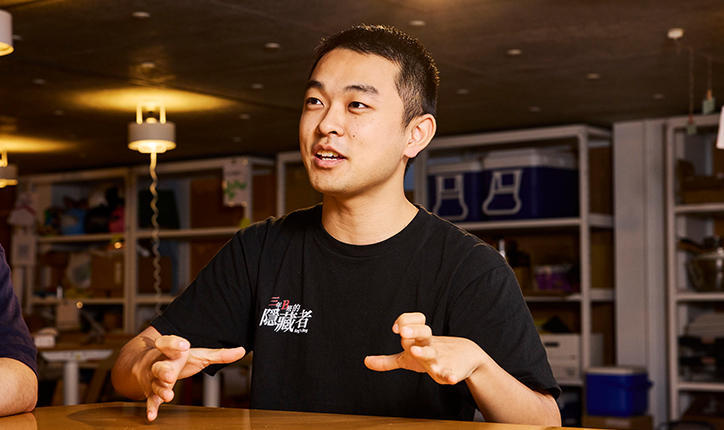
Furukata: I was actually enrolled at a different university, but during the pandemic, with all of my classes being online, I started to get fed up studying that way. I applied to Keio University's Faculty of Letters back in high school, but unfortunately, I didn't get in at the time. My disappointment motivated me to make a change. Since all my classes were online and I wasn't going to campus, I thought I could use that extra time to study and reapply to Keio University, except this time, I applied to SFC.
As I mentioned earlier, I went to Shonandai Station but left without seeing the campus. That was in January, just before the entrance exams. Back then, I was walking a lot. After getting off at the station, I found a nice riverbank and spent about an hour walking there before heading back home.
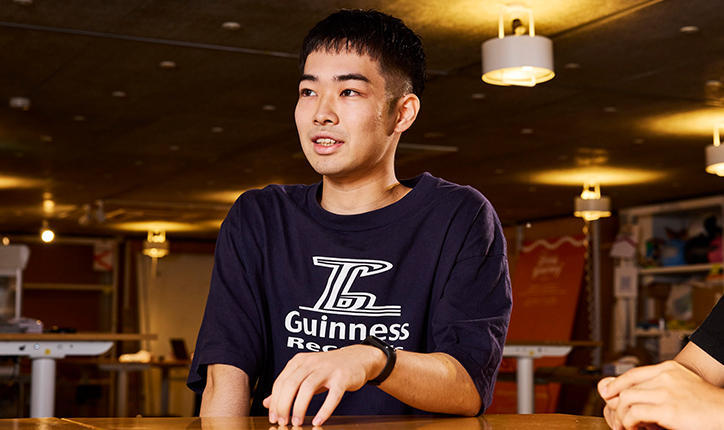
Imai: There's something really nice about the suburbs. We usually walk to the train station instead of taking the bus. In fact, it was during one of these walks when the idea for "Ray's Blog" was born.
Horiguchi: True. I really enjoy the suburban vibe, which is one of the reasons I chose SFC. While other campuses are more central and convenient, I'm not much of a city person. I prefer the laid-back atmosphere here.
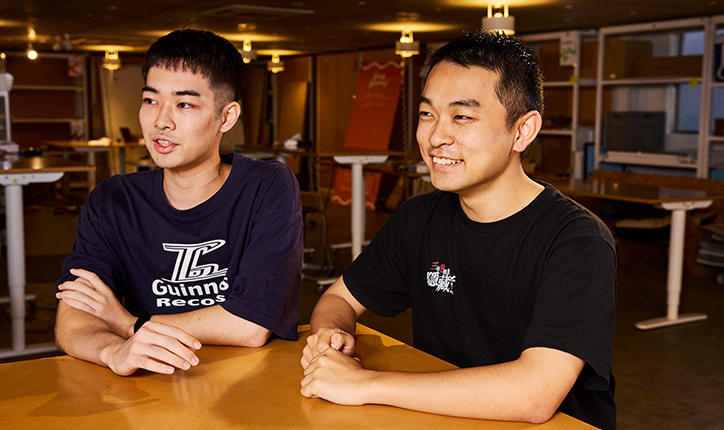
Imai: I think having the right environment is critical when it comes to focusing on your studies. I'm originally from Setagaya City in Tokyo, but I spent high school in a very rural part of Canada. Universities in the U.S. and Canada often feature expansive lawns and sprawling campuses. I knew I wanted to return to Japan for university, but I wanted to go to a similar campus surrounded by nature, away from the city, where I could concentrate on my studies. The fact that SFC had professors specializing in my area of interest was one major reason, but the campus's natural surroundings also played a big role. The campus has a lawn and the beautiful Kamoi Pond. I love taking walks around the pond with my friends.
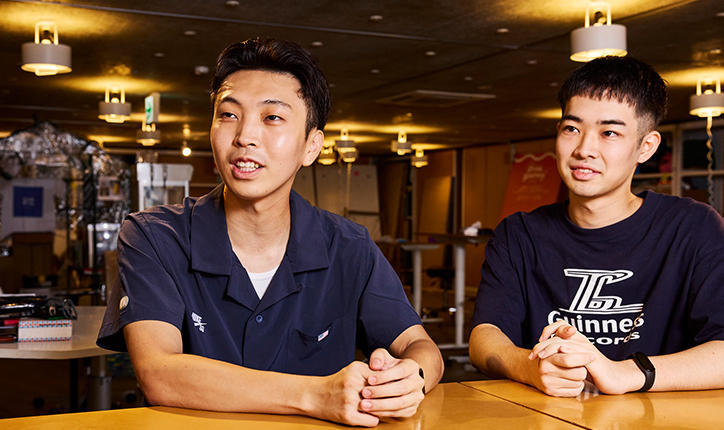
– How did the three of you meeting in German class lead to an interest in media literacy education?
Imai: We were discussing doing something together when we came across a fact-checking competition by Google called the Google Verification Challenge. I think I first saw it in an ad on social media. We decided to participate in the Japanese competition over the summer break, and after some practice, we managed to win the national championship. That allowed us to advance to the global competition, where we placed fourth. The experience sparked a deeper interest in fact-checking.
During high school in Canada, I attended media literacy classes, but the lessons focused on avoiding the internet altogether because it was considered "dangerous." But today, it's almost impossible to live without engaging with information online. During the COVID-19 pandemic, many Japanese people fell victim to misinformation, like absurd claims that you could diagnose COVID-19 just by holding your breath.
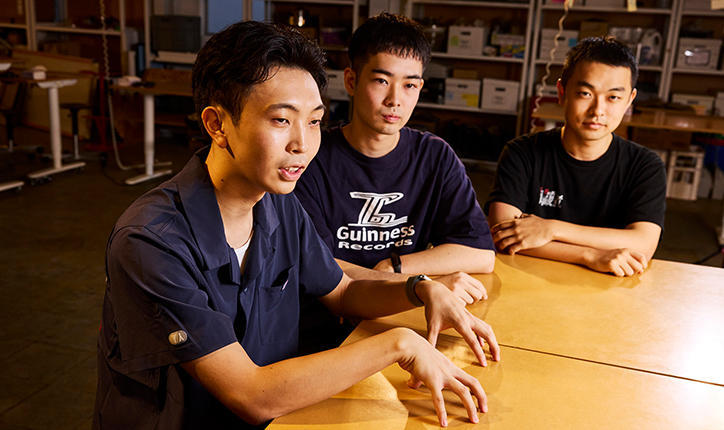
Horiguchi: The first time I realized the importance of being vigilant about misinformation was during the 2016 U.S. presidential election, but over time, I let my guard down again. It wasn't until the COVID-19 pandemic that my concern about misinformation resurged. Similar to Canada, where Imai lived, media literacy education is taught in American schools, but nobody takes it very seriously.
Imai: While it's crucial not to be swayed by misinformation, all too often, schools rely on an overly simplistic approach that merely instructs students not to use the internet. But in a world that depends so much on information from the internet, it's no longer realistic to tell people not to use the web because it might be dangerous. The competition made us realize that it would be far more beneficial to teach people how to use the internet effectively.
We thought that making learning more enjoyable could enhance media literacy. During one of our walks, we came up with the idea of gamifying education. That's when we decided on our different roles and got to work. While our lab specializes in UI and UX research, I'm more interested in education, and Horiguchi and Furukata are more drawn to creative and technical areas like programming and video production.
Horiguchi: I've been into puzzles and mystery games ever since junior high. There's this mystery game that bridges the online and real worlds that I really like, so I've always wanted to organize something like it for schools. That's when the idea of combining mystery with media literacy education came to me—to teach it in a game-like way.
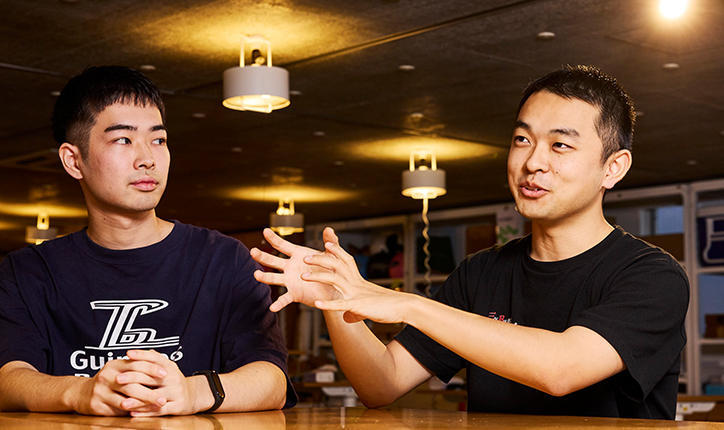
Furukata: I ended up in charge of writing the scenario, even though I had never written one before. I figured I had no choice but to give it a shot.
Horiguchi: I worked on development while I was studying programming. At the same time, I interned at the Life is Tech! programming school for junior high and high school students and gained experience as a journalist at the Japan Fact-check Center.
Imai: Since we didn't have any money, we asked friends at university to do the voice acting for the animation. Other friends helped us test the prototype, and we refined it based on their feedback. Our program targets junior high, high school, and university students. Since we're close to them in age, we have a good sense of what's engaging and what isn't. I believe that's one of our key strengths.
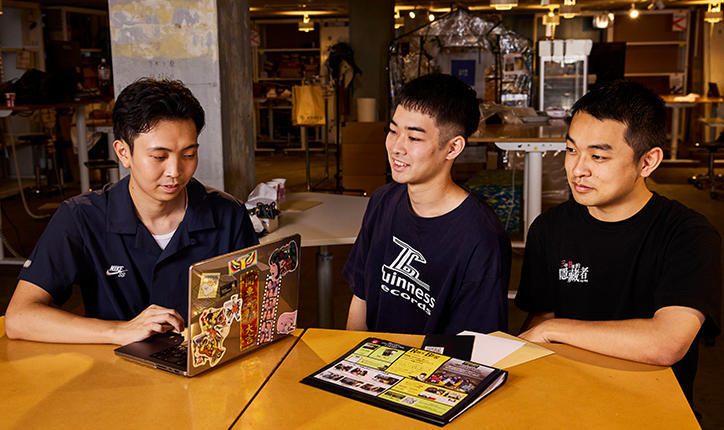
– Congratulations on the launch of the international versions as well. What are your plans for the future?
Imai: Thank you. We're really excited about the English version, which we released in December 2023 at the Trusted Media Summit 2023 in Singapore. We've also launched a traditional Chinese version for Taiwan and other Chinese-speaking regions. The mystery game format adds an entertainment element that has proven to boost both learners' motivation and knowledge retention―two critical factors for effective learning in any field. We aim to scale the program beyond media literacy education to include corporate training and other areas. Classroom Adventure Inc. began with just the three of us, but now we have support from Keio students across different faculties, and we're excited to take on new challenges as we continue to grow.
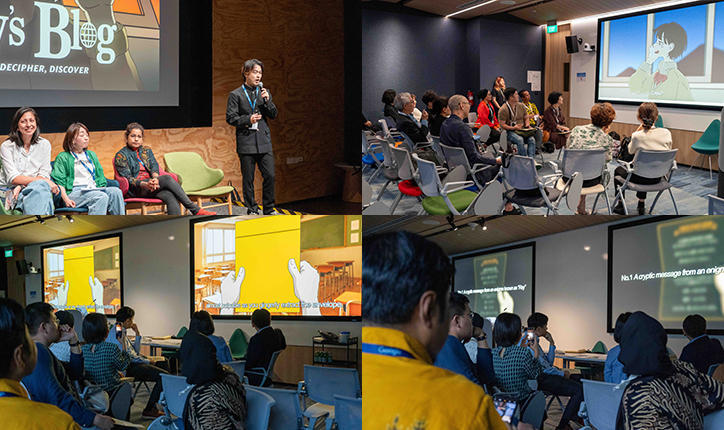
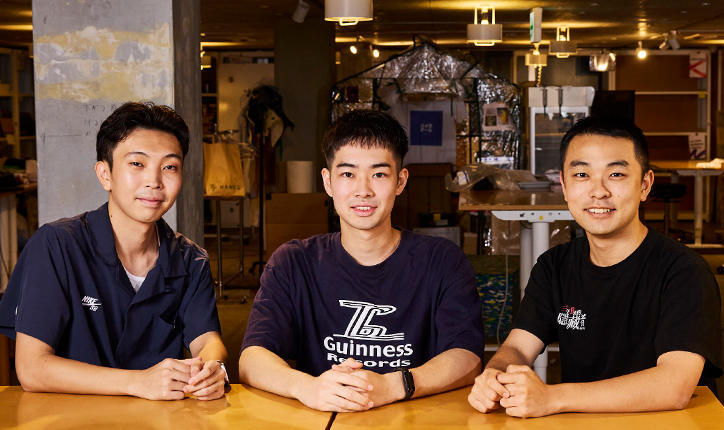
Classroom Adventure Inc.
Classroom Adventure is a creative team that uses gamification to make learning more enjoyable, providing innovative experiences across education, corporate training, and other fields. The core team, winners of Google's Youth Verification Challenge 2022 (national Japanese champions, fourth globally), developed the interactive media literacy program "Ray's Blog." Ray's Blog makes media literacy education more engaging by teaching players how to identify fake content in videos and posts. It is now integrated into school curriculums across five countries and regions (Canada, Indonesia, Japan, Taiwan, and the U.S.), with workshops conducted in elementary, junior high, and high schools in these locations. It was awarded the Grand Prize in the General Category of the Asahi Shimbun-sponsored University SDGs ACTION! AWARDS 2024. Ray's Blog was also presented at the Trusted Media Summit 2023 and at the Panel on Ensuring the Healthy Flow of Information in Digital Spaces, hosted by Japan's Ministry of Internal Affairs and Communications.
*All affiliations and titles are current as of the time of publication.
Footer start
Navigation start



Noa Horiguchi: Fourth-Year Student, Faculty of Environment and Information Studies
Fourth-Year Student, Faculty of Environment and Information Studies Born in California in 2002, Noa first came to Japan at the age of 18 to attend university. He worked as an educational intern at the programming school "Life is Tech!" and as a journalist at the Japan Fact-check Center. Driven by the challenges he faced while fact-checking, he co-founded Classroom Adventure Inc. with Imai and Furukata.
Zentaro Imai: Third-Year Student, Faculty of Policy Management
Born in 2001, Zentaro graduated from a public high school in Canada and returned to Japan to study at a university. While serving as Vice President at YOMY!, an edtech company specializing in services for young children, he won Japan's national title in a global fact-checking competition alongside Horiguchi and Furukata. He is a co-founder of Classroom Adventure Inc., where he is responsible for systems and engineering.
Hinata Furukata: Fourth-Year Student, Faculty of Environment and Information Studies
Fourth-Year Student, Faculty of Environment and Information Studies Born in 2001, Hinata is the content developer for Ray's Blog. He co-founded Classroom Adventure Inc. together with Horiguchi and Imai. As a content creator, he has grown his YouTube channel to over 200,000 subscribers in just two years. He has also created video content as an intern at the Japan Fact-check Center.